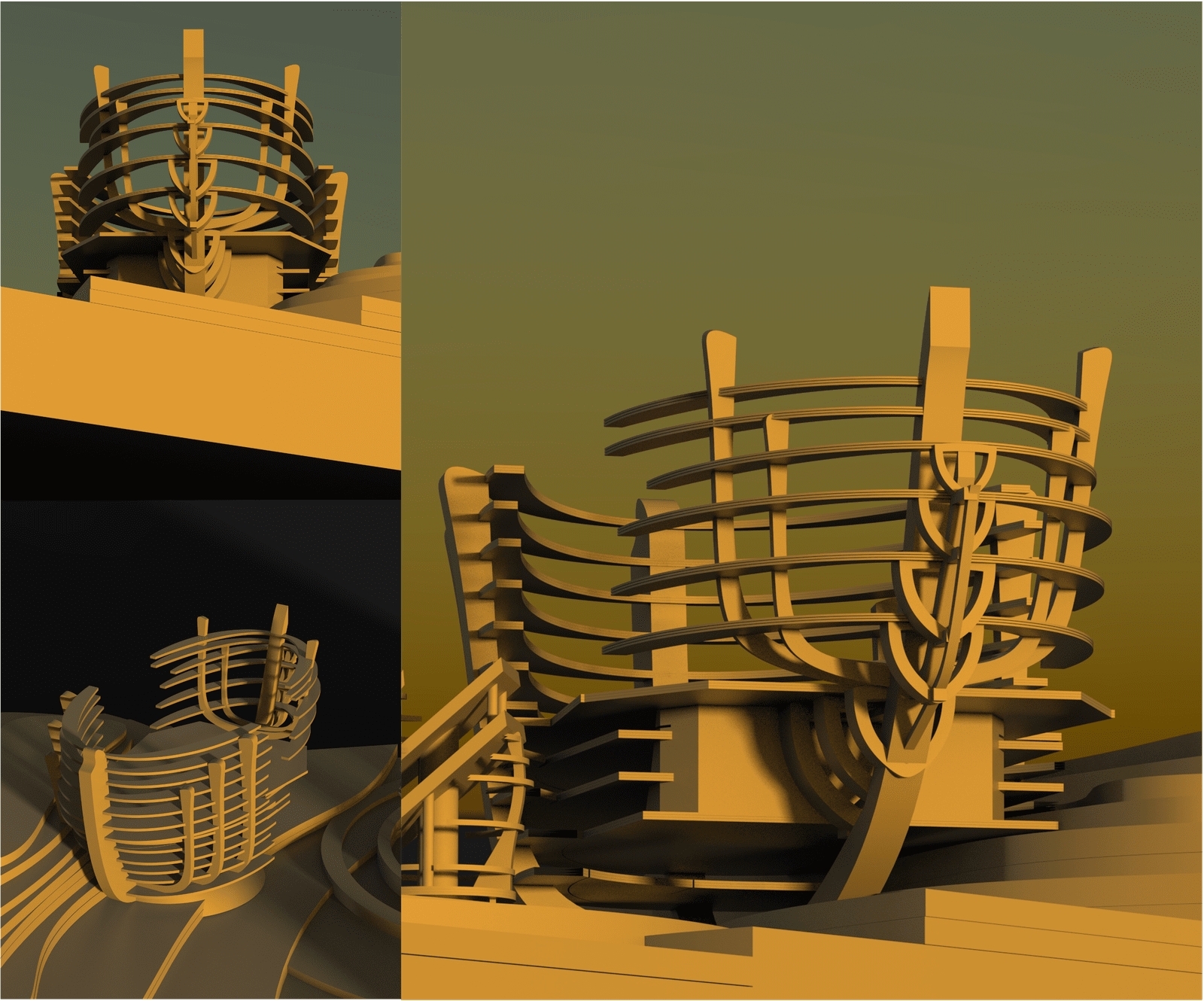





3-D Design
(Jecia)
Zi Yun Mao
The WestSide School|British Columbia, Canada

7.5" x 7.4" x 13.4"
Material(s): Rhino, Keyshot
Process(es): I used Rhino and Keyshot to demonstrate layers and the magnificent aspect of industrialization.
Curatorial Note: The student has explored surreal, desolate landscapes in an architectural setting. Destruction of civilization is due to expansion of over industrialization.
Digital programs, Rhino and Keyshot create strong contrast of light and shadow in architectural designs.


“Human civilization will have disappeared due to a lack of resources caused by over-industrialization.
In these works, modern building structures are simplified, demonstrating repetition while presenting the magnificent characteristics of industrialization. In addition, hierarchy is illustrated using layers, with light and shadows.”

Student statement
Student
statement
This piece is titled The Magnificent Dilapidation. The idea for my sustained investigation came from a documentary about the LouLan Kingdom. This great ancient civilization was buried under loads of sand in a desert in XinJiang. Looking at the photos of its antique relics, I was shocked by how prosperous this civilization was in the past. With the erosion of nature, the mysterious beauty of these buildings deeply attracted me. For this reason, I started to imagine the dilapidated buildings of current modern civilization.
Human civilization will have disappeared due to a lack of resources caused by over-industrialization. The past high-tech and magnificent buildings will be eroded into a general shape by nature. With this background of imagination, I used point, line, shape, and plane to explore the beauty of dilapidation through patterns in single and grouped buildings. In these works, modern building structures are simplified, demonstrating repetition while presenting the magnificent characteristics of industrialization. In addition, volume and hierarchy are illustrated using layers, light, and shadow.

(Jecia) Zi Yun Mao
Material(s): paper, pen
Process(es): I used pen and paper to design an overview of the general shape of the buildings.
During the process of creating this piece, I demonstrated practice, experiment, and revision. I first sketched the buildings that I would like to include. Then, I 3-D modeled all of them while practicing putting different structures together. I also revised all the buildings’ structures and compositions using the same method. Afterward, I rendered all the buildings separately to experiment with their visual effects. Lastly, I created blueprints to laser cut all the structures and put them together on a huge sand table in real life.
7.5" x 7.4" x 13.4"
Material(s): Carpinus planks, sand
Process(es): I demonstrated the magnificence of industrialization. Sand is used to emphasize dilapidation.
For other AP Art and Design students, I strongly recommend they explore their own thoughts in this series of courses. I started learning art ever since when I was in grade three. I explored many techniques such as sketching, painting, water coloring, calligraphy, etc. However, in the past, I focused only on mastering the foundation skills such as perspective, light, and shadow. Thanks to the chance that AP Art and Design courses provide, I got a chance to think like an actual artist, in which I put much more deep thinking into the visual effects and the meaningfulness of my works.
Material(s): Carpinus planks
Process(es): This is the process of building the model in real life using the woodcut from the CAD graphics.
10.6 in x 31.5 x 31.5 in.
Material(s): Carpinus planks, sand
Process(es): I demonstrated the hierarchy of the terrain while exploring repeated structures and buildings.
(Jecia) Zi Yun Mao














